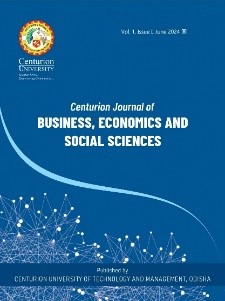1.1.2 Social and Infrastructural development of Tribal population in Koraput District of Odisha:A Case Study
Mahendra Kumar Nayak,
Research Scholar, Om Sterling Global University, Hisar, Haryana, India
DOI: CJBES/Vol.1.1/June_2024
ABSTRACT
This paper presents a comprehensive case study examining the social and infrastructural development of tribal populations in the Koraput district of Odisha, India. The study on a development intervention orchestrated through a collaborative framework involving government agencies, civil society organizations, and tribal communities themselves. The primary focus is on elucidating the multifaceted challenges faced by tribal communities in this region, including pervasive poverty, systemic marginalization, and limited access to essential services. However, the research also underscores the immense potential for fostering sustainable development and empowering tribal communities through concerted efforts. Central to this investigation is the recognition of the critical role played by mass media in shaping the lives of tribal communities. By harnessing the power of mass media, specifically through the establishment of community radio stations, CSC, and mobile towers, previously unreached and tribal backward areas have witnessed transformational changes. These media platforms have not only facilitated communication within and beyond tribal communities but have also acted as conduits for disseminating critical information about development initiatives, government policies, and available resources. This paper also highlights the challenges faced by tribal communities, including poverty, marginalization, and lack of access to basic services.
This paper also emphasizes the importance of cultural sensitivity in the process of development. It underscores the necessity of tailoring interventions to align with the unique cultural norms, traditions, and beliefs of the tribal populations. Moreover, it highlights the imperative of promoting women’s empowerment within these communities, recognizing the pivotal role that women play in the social and economic fabric of tribal life. While the journey towards social and infrastructural development for tribal communities in the Koraput district has been marked by significant challenges, this study illuminates the progress made through the collaborative efforts of both governmental and non-governmental organizations. Though there remains a substantial distance to traverse, these initiatives have engendered positive changes and hold the promise of ushering in lasting, sustainable development within these communities. However, various government and non-governmental organizations have undertaken initiatives to address these issues and promote the development of these communities. While there is still a long way to go, these initiatives have brought about positive changes and have the potential to bring about long-term development in these communities.
Keywords: Sustainable Development, Marginalization, Women’s empowerment, Tribal Communities, Government interventions.

